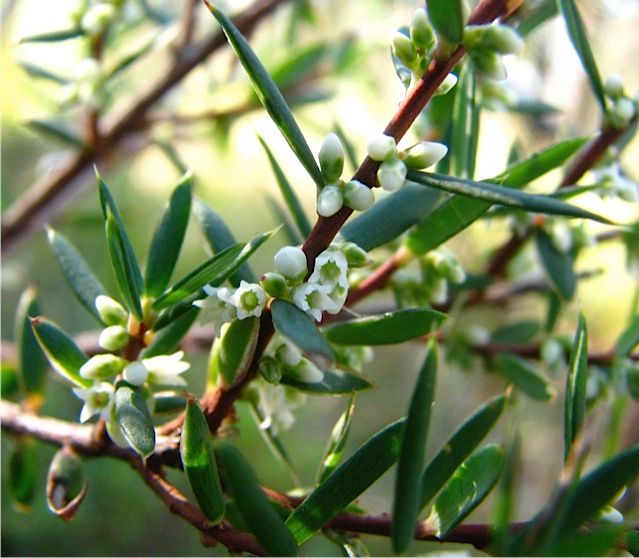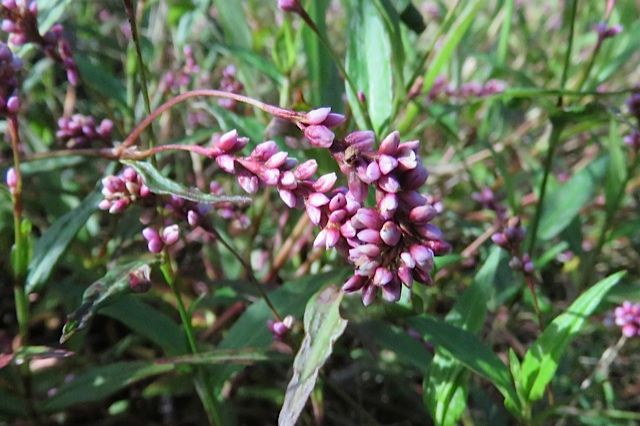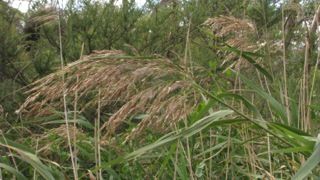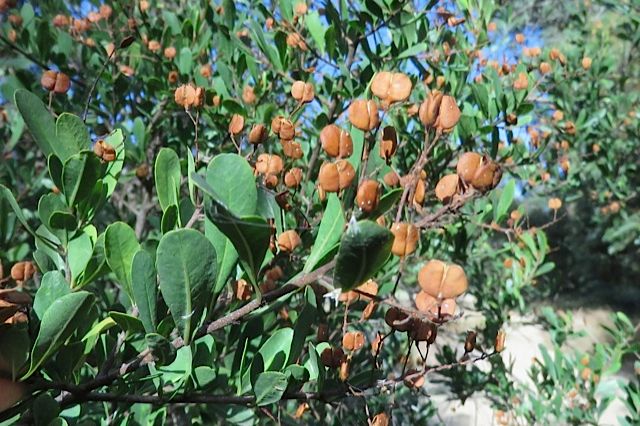It is a challenge this month to find anything in flower, especially in the heathlands, and the few flowers to be found tend to be small and pale.
However, be on the lookout for Monotoca scoparia Prickly Broom-heath, as tiny white flowers are growing in the axils of the stiff, pointed leaves. The flowers benefit from close inspection, as they are dioecious, which means that the male and female flowers are on different plants. The male flowers are a bit larger with visible stamens.

Prickly Broom-heath female

Prickly Broom-heath male
However, I am finding that the waterways and coastal dunes have more to offer. A coastal favourite of mine, Alyxia buxifolia Sea-box is my choice as flower of the month, although it is not a common plant. The unusual, and very distinctive, small, white spiral flowers, which shine brightly in the sun, remind me of a child’s pinwheel, and there is the added bonus of attractive, rich, red-orange seeds, which are also appearing. The shiny, oval, dark green leaves form an appealing backdrop to the white and red.

Sea Box
The Allen Noble Sanctuary appears pink at the moment, with masses of slender spikes of deep-pink flowers of the ground-covering Persicaria decipiens Spotted Knotweed. It is not a weed, although it appears to grow like one.
 Spotted Knotweed
Spotted Knotweed
Near the water’s edge there are also attractive, single, pinkish-white, tubular flowers on Gratiola peruviana Austral Brooklime. The stems are unusual, being thick and fleshy, with opposite, stem-clasping, pale-green leaves.

Austral Brooklime
Most of the grasses still have their flowers on display as they dry out. I really like the fluffy, feathery flowers on the so-called Common Reed, which is actually a grass, Phragmites australis. This tall, bamboo-like grass can take over large areas, pushing out other semi-aquatic plants. It had a multitude of uses for aborigines, such as food, spears, ornaments, rafts and woven baskets – truly a wonderful plant!

Common Reed
Autumn is a good time to check out the seeds of many plants. How about the clusters of purse-like seed pods on Bursaria spinosa subsp. spinosa Sweet Bursaria, which were green, and are now a rich bronze?

Sweet Bursaria
What else is there to see? Who knows? Keep a lookout, and you might see what the less discerning will miss! Remember to carry ‘Flowers of Anglesea and Aireys Inlet’.
Ellinor Campbell